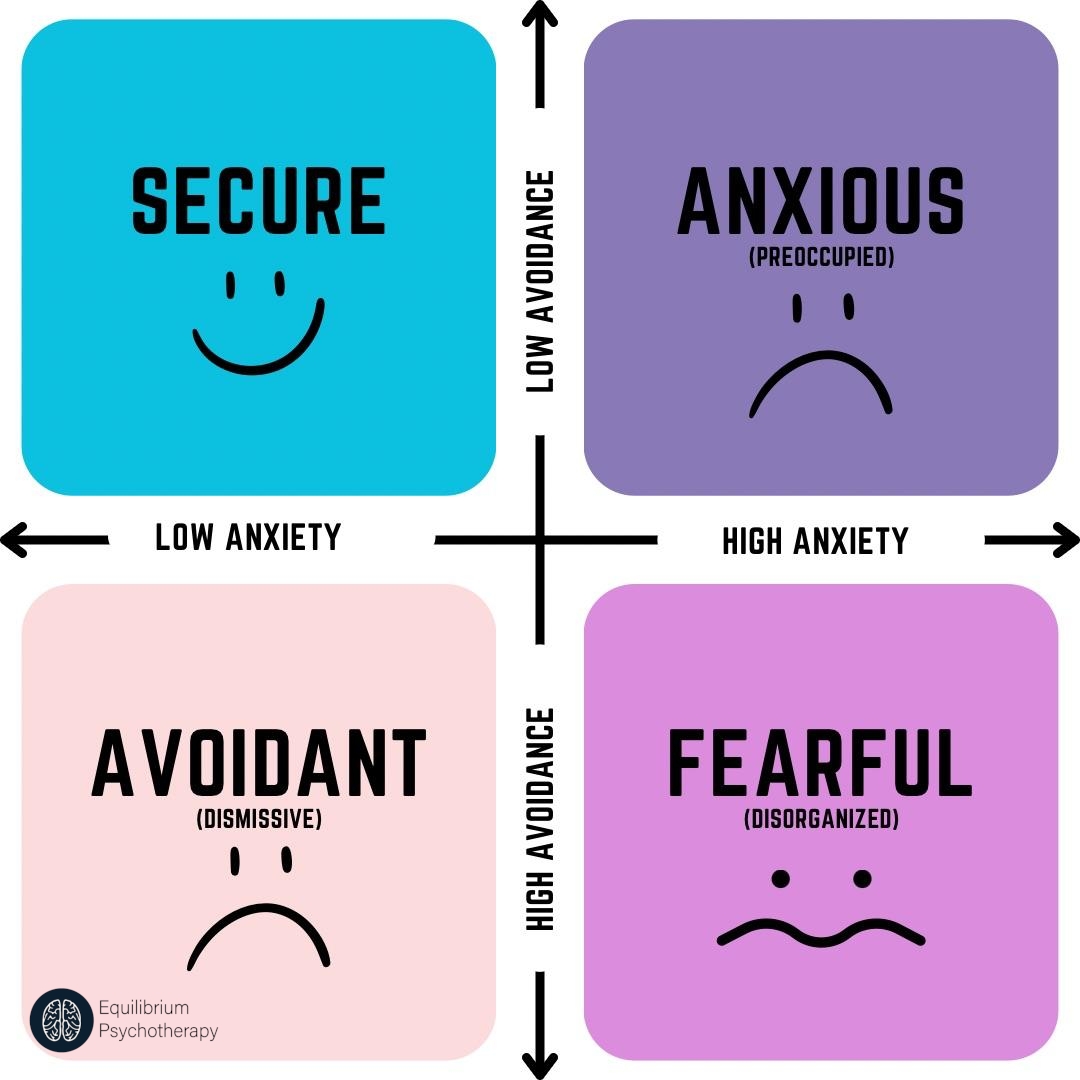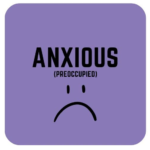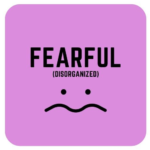Understanding Attachment Styles: How They Shape Our Relationships
Have you ever wondered why some people seem so secure in their relationships, while others are anxious, avoidant, or fearful of getting close? The answer often lies in attachment styles, a psychological theory that explains how our early experiences with caregivers shape the way we relate to others throughout our lives.

The History of Attachment Theory
Attachment theory was first developed by British psychologist John Bowlby in the mid-20th century. Bowlby believed that human beings have an innate need to form close emotional bonds with others, particularly in infancy. He noticed that early interactions with caregivers had a profound impact on a child’s emotional development and ability to form secure relationships later in life.
Later, Mary Ainsworth, a developmental psychologist, expanded on Bowlby’s work by conducting the famous Strange Situation experiment in the 1970s. In this study, Ainsworth observed how infants reacted when their primary caregiver left them in an unfamiliar environment and then returned. Based on the children’s reactions, Ainsworth identified four main attachment styles that continue to shape relationships well into adulthood.
Watch the Strange Situation Experiment here on YouTube:
The Four Attachment Styles

Secure Attachment
Characteristics:
- Individuals with a secure attachment style are comfortable with intimacy, trust others, and maintain healthy boundaries.
- They are able to form close, meaningful relationships without fear of abandonment or over-reliance on their partner.
- Children who grow up with consistent, responsive caregiving tend to develop secure attachment.
- Their caregivers provide both emotional support and a sense of safety, allowing the child to explore the world confidently, knowing they have a reliable base to return to.
Emma is in a long-term, committed relationship. When her partner needs space to focus on work, she doesn’t feel threatened or anxious. She knows that their relationship is strong and that their connection won’t diminish simply because of temporary distance. Emma is open with her feelings and trusts her partner to be equally communicative.
Research shows that about 56% of adults have a secure attachment style, and these individuals tend to experience more satisfying relationships and lower levels of stress in romantic and social settings (Fraley & Shaver, 2000).

Anxious (Preoccupied) Attachment
Characteristics:
- People with an anxious attachment style often crave closeness but worry about their partner’s commitment and affection.
- They may become overly dependent, constantly seeking reassurance and feeling insecure in their relationships.
- This attachment style usually stems from inconsistent caregiving, where the child may have received love and attention in unpredictable ways.
- As a result, they grow up unsure about whether their needs will be met, leading to heightened anxiety in relationships.
Sarah tends to overthink her partner’s every action. If they don’t text back immediately, she fears they’re losing interest or pulling away. She often needs constant reassurance that she’s loved, but no amount of comfort seems to fully ease her fears of abandonment.
Research suggests that 20% of adults have an anxious attachment style, and they may experience heightened levels of relationship stress. Studies show that anxiously attached individuals are more prone to rumination and emotional highs and lows, which can make relationships feel tumultuous (Mikulincer & Shaver, 2007).

Avoidant (Dismissive) Attachment
Characteristics:
- Those with avoidant attachment tend to value independence and self-sufficiency to the extent that they avoid emotional closeness.
- They often suppress their emotions, preferring to deal with challenges alone and keeping others at a distance.
- Avoidant attachment often develops when caregivers are emotionally unavailable or unresponsive to the child’s needs.
- These children learn to rely on themselves, suppressing their desire for connection because they believe they cannot depend on others.
Jake enjoys dating, but as soon as someone starts getting too close emotionally, he pulls away. He prefers to keep things casual, and the moment he senses a relationship becoming more serious, he distances himself, often ghosting or avoiding communication altogether.
Studies suggest that about 23% of adults exhibit an avoidant attachment style. These individuals often report lower levels of relationship satisfaction and may struggle with intimacy, preferring to maintain emotional distance (Simpson, 1990).

Fearful (Disorganized) Attachment
Characteristics:
- This style is a mix of anxious and avoidant tendencies.
- People with a fearful-avoidant attachment crave intimacy but are also terrified of it.
- They may have unpredictable behaviors in relationships, fluctuating between clinginess and pushing their partners away.
- Fearful-avoidant attachment typically stems from childhood trauma, such as abuse or neglect.
- These individuals may have grown up in environments where caregivers were both a source of fear and comfort, leading to confusion and disorganized emotional responses.
Mark wants to feel close to his partner but is also terrified of being hurt. He tends to act irrationally, sometimes showering his partner with affection and other times shutting down emotionally without explanation. His fear of rejection keeps him from fully investing in the relationship.
Fearful-avoidant attachment is less common, affecting around 3-5% of adults. Research shows that individuals with this attachment style often experience emotional dysregulation, and their relationships may be fraught with conflict and insecurity (Main & Solomon, 1990).

“We are only as needy as our unmet needs.”
John Bowlby
How Attachment Styles Affect Adult Relationships
Your attachment style doesn’t just influence romantic relationships—it can also shape your friendships, family dynamics, and work interactions. For example:
- Securely attached individuals tend to handle conflict constructively, seek support when needed, and balance independence with intimacy in all types of relationships.
- Anxiously attached people may struggle with trusting friends or colleagues, fearing rejection or abandonment in both personal and professional settings.
- Avoidantly attached individuals often prefer to keep a distance, avoiding emotional entanglements, whether with friends, partners, or coworkers.
Can You Have More Than One Attachment Style?
It’s important to note that attachment styles aren’t always neatly defined categories. Many people exhibit a blend of different attachment styles, depending on the context, relationship, or period of life they’re in. For example, you might feel secure in your friendships but have anxious tendencies in romantic relationships, or you might switch between avoidant and anxious behaviors depending on the dynamics in a relationship.
Maya generally feels confident and secure in her close friendships, where she’s able to express her needs and trust her friends. However, when it comes to romantic relationships, she often worries about being abandoned and needs constant reassurance from her partner. This shows a mix of secure and anxious attachment tendencies.
Why Does This Happen?
Different life experiences can shape how we relate to others. For instance, a person may have developed secure attachments in childhood but experienced betrayal or trauma in adult relationships, causing them to develop more avoidant or anxious tendencies over time. Similarly, a person with an anxious attachment style may work on their emotional regulation and develop more secure traits over time through therapy and personal growth.
Recognizing that you can have elements of more than one attachment style can be empowering. It means you’re not “stuck” in one mode of relating to others, and you have the ability to adapt and evolve in different relationships.
Can Your Attachment Style Change?
The good news is that attachment styles are not set in stone. With awareness and work, individuals can move toward a more secure attachment style. Therapy is an especially effective way to explore attachment patterns and develop healthier relationship habits.
For instance, Cognitive Behavioral Therapy (CBT) can help reframe unhelpful beliefs about relationships, while Attachment-Based Therapy focuses directly on addressing the impact of early life experiences on current relationship dynamics. Mindfulness practices can also help people with anxious or avoidant tendencies stay present in their relationships, reducing fear and improving communication.
Discovering Your Attachment Style
If you’re curious about your own attachment style and how it may be influencing your relationships, exploring this with a therapist can be a valuable first step. Understanding your attachment style can help you uncover patterns that may be affecting your emotional well-being and interpersonal connections.
What Can You Do?
During therapy, you can work through your early childhood experiences, current relationship dynamics, and personal emotional responses to better understand your attachment style. Whether you find yourself identifying with one style or a mix of several, a therapist can guide you in recognizing these patterns and helping you develop healthier relational habits.
Further Reading:
- Bowlby, J. (1969). Attachment and Loss: Vol. 1. Attachment. New York: Basic Books.
- Mikulincer, M., & Shaver, P. R. (2007). Attachment in Adulthood: Structure, Dynamics, and Change. Guilford Press.
- Fraley, R. C., & Shaver, P. R. (2000). “Adult romantic attachment: Theoretical developments, emerging controversies, and unanswered questions.” Review of General Psychology, 4(2), 132-154.



